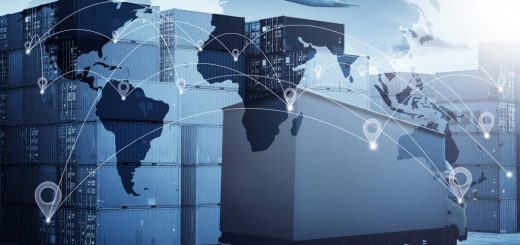US Automotive Repair: Cost-Effective China Consolidation for Auto Parts & Tools
Introduction
The U.S. automotive repair industry relies heavily on a diverse range of parts and tools, many of which are sourced from China. To maintain competitiveness and profitability, repair shops are increasingly turning to consolidation—a logistics strategy that combines multiple smaller shipments into a single, larger one. This approach not only reduces shipping costs but also enhances operational efficiency.
Understanding Package Consolidation
Package consolidation involves merging several smaller shipments from various suppliers into one consolidated shipment. This method offers several advantages for automotive repair shops:
- Cost Savings: Sharing transportation costs among multiple shipments reduces per-unit shipping expenses.
- Simplified Logistics: Managing a single shipment streamlines the import process, reducing administrative overhead.
- Reduced Risk of Damage: Proper consolidation minimizes the risk of damage during transit, especially for fragile auto parts.
- Improved Inventory Management: Receiving consolidated shipments allows for better planning and storage.
Sourcing Auto Parts and Tools from China
China is home to numerous manufacturers producing a vast array of auto parts and tools, including brake components, suspension systems, diagnostic equipment, and more. Regions like Guangdong, Zhejiang, and Shandong are known for their extensive production of these materials. Repair shops can source unique items such as custom-designed tools, specialty diagnostic equipment, and seasonal parts that cater to niche markets.
Platforms like Alibaba, Made-in-China, and Global Sources provide access to a wide network of suppliers. However, it’s crucial to conduct due diligence by verifying supplier credentials, requesting samples, and ensuring compliance with quality standards. Engaging with reputable sourcing agents can also facilitate the procurement process.
Shipping Methods for Consolidated Auto Parts
Once auto parts and tools are sourced, selecting the appropriate shipping method is essential to balance cost, speed, and reliability:
1. Sea Freight (Less-than-Container Load – LCL)
- Transit Time: Approximately 30–50 days.
- Cost: Economical for large shipments; rates vary based on volume and destination.
- Considerations: Suitable for non-urgent shipments; requires coordination for consolidation and deconsolidation.
2. Rail Freight
- Transit Time: Approximately 15–30 days.
- Cost: Moderately priced; offers a balance between cost and speed.
- Considerations: Ideal for destinations in Central and Eastern Europe; may require additional transportation for final delivery.
3. Air Freight
- Transit Time: Approximately 3–5 days.
- Cost: Higher; approximately $4–$8 per kilogram.
- Considerations: Best for high-value or time-sensitive shipments; may be cost-prohibitive for large volumes.
4. Express Shipping
- Transit Time: Approximately 1–3 days.
- Cost: Highest; approximately $8–$10 per kilogram.
- Considerations: Suitable for urgent shipments; includes door-to-door service.
Specialized logistics providers offer consolidation services tailored to the automotive industry, ensuring compliance with packaging and labeling requirements.
Customs Clearance in the United States
Importing auto parts and tools into the U.S. requires adherence to specific regulations:
- Customs Declarations: Accurate and complete declarations are essential to avoid delays and fines.
- HS Codes: Correct classification of goods using Harmonized System codes determines applicable duties and taxes.
- Import Duties and Taxes: Import duties vary by product category; repair shops should consult the U.S. Customs and Border Protection (CBP) guidelines for specific rates.
- Certificates and Licenses: Certain auto parts may require specific certifications or licenses for importation.
Utilizing the U.S. Customs and Border Protection’s Automated Commercial Environment (ACE) system can streamline the import process and facilitate compliance.
Choosing a Reliable Freight Forwarder
Selecting a reputable freight forwarder is crucial for ensuring the safe and timely delivery of auto parts and tools:
- Experience: Look for a forwarder with expertise in handling automotive components and familiarity with U.S. import regulations.
- Services Offered: Ensure they provide consolidation services, warehousing, and comprehensive shipping solutions.
- Reputation: Research customer reviews and testimonials to gauge reliability and service quality.
- Technology: Opt for a forwarder that offers tracking systems and transparent communication channels.
Providers like CNXtrans offer consolidation services for auto parts, allowing for cost-effective shipping solutions.
Best Practices for Successful Importation
To ensure a smooth import process:
- Plan Ahead: Allow ample time for production, consolidation, and shipping.Forest Shipping+2the-sun.com+2美国国际贸易委员会+2
- Maintain Communication: Keep open lines of communication with suppliers, freight forwarders, and customs brokers.
- Stay Informed: Keep abreast of any changes in import regulations or tariffs that may affect your shipments.
- Quality Control: Implement quality control measures to inspect parts upon arrival and address any discrepancies promptly.
Conclusion
Consolidating shipments of auto parts and tools from China offers U.S. automotive repair shops a strategic advantage in managing costs and streamlining operations. By sourcing quality products, selecting appropriate shipping methods, ensuring compliance with regulations, and partnering with reliable freight forwarders, repair shops can enhance their supply chain efficiency and meet the growing demand for diverse automotive components.

